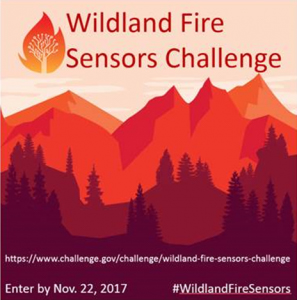 The Environmental Protection Agency has announced an initiative to develop a new low-cost system that could monitor air quality affected by smoke from wildland fires. The existing hardware is large, cumbersome, and expensive, thereby limiting the number of monitoring stations and the data that is available to help officials provide appropriate strategies to minimize smoke exposure.
The Environmental Protection Agency has announced an initiative to develop a new low-cost system that could monitor air quality affected by smoke from wildland fires. The existing hardware is large, cumbersome, and expensive, thereby limiting the number of monitoring stations and the data that is available to help officials provide appropriate strategies to minimize smoke exposure.
Below is an excerpt from the EPA’s announcement about what they call the Wildland Fire Sensors Challenge. The three graphics were part of the agency’s news release.
Today, emerging technologies – including miniaturized direct-reading sensors, compact/powerful microprocessors, and wireless data communications – offer the opportunity to develop new systems to quickly gather and communicate air pollution data.
Wild fires are increasingly common events that produce significant air pollution, posing health risks to first responders, residents in nearby areas, and downwind communities. Also, wild fires are increasing in frequency and intensity, and the fire season is growing longer. Prescribed fires, which are used to manage ecosystems or reduce risk of wild fires, are typically managed to minimize downwind impacts on populated areas; however, people in close proximity may still be exposed to smoke. The description “wildland fires” refers to both wild and prescribed fires.
This challenge seeks a field-ready prototype system capable of measuring constituents of smoke, including particulates, carbon monoxide, ozone, and carbon dioxide, over the wide range of levels expected during wildland fires. The prototype system should be accurate, light-weight, easy to operate, and capable of wireless data transmission, so that first responders and nearby communities have access to timely information about local air quality conditions during wildland fire events.
The EPA is partnering with several agencies to develop this equipment: Forest Service, National Park Service, National Oceanic and Atmospheric Administration, National Aeronautics and Space Administration, and Centers for Disease Control and Prevention.
However, with the current Administration’s intended massive cutbacks to the EPA and even scattered calls to eliminate the agency, finding the money and staff to bring this idea to fruition is anything but a slam dunk.


